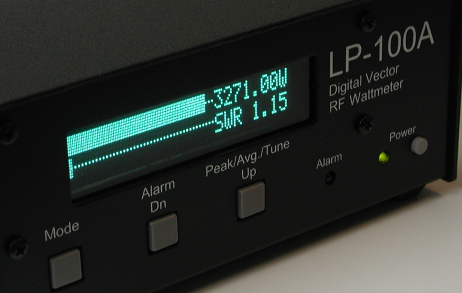
(Please scroll to the bottom of this page to access the menu)
Computerized Radio Station Automation
The software of choice for operation of the KJ6YVT station is TRX-Manager written by Laurent Labourie (F6DEX).
VIDEO: TRX-Manager Tour
VIDEO: TRX-Manager Remote Station Operation

I have found TRX-Manager enhances my station operation in so many ways, that I can't imagine operating without it.
TRX-Manager enables me to click on a peak in the spectrum window, or an entry in the DX Cluster Spots, and instantly tune to it with the correct QRX offset, mode, etc. One click in the integrated logbook, and the contact station's call, signal report, frequency, time, date, etc. (including my output power) are all captured ready for editing and logging. Or, you can hover your mouse pointer over one of the VFO display digits, and roll your mouse-wheel to increment the frequency by that decade. This variable frequency incremental tuning is much more awkward without TRX-Manager.
TRX-Manager integrates with all my hardware permitting me to select an IC-7800 VFO frequency and instantly have the assigned antenna selected, the Alpha 87A linear amplifier tuned correctly, the correct mode for that portion of the band selected, the beam aimed, and an audio record of the QSO created. TRX-Manager also integrates with the LP-100A Digital Vector Wattmeter simultaneously displaying SWR, transmit power, and all the other parameters that hardware is capable of reporting; that's something the hardware alone can't do.
I find that diversity reception aids in improving signal intelligibility by effectively overcoming QSB to a greater of lesser degree. This IC-7800 CI-V sequence programmed into one of the Function-buttons in the Monitoring window reduces the front-panel button presses from five to one. This is almost as good having the IC-7800 'B' Sub receiver track the 'A' Main receiver VFO (a feature others have lamented being absent):
CAT Command: 07B1/07C1/07D1/120001/164001/07D0
Off: 07c0
Label: Dvsty
That CAT Command copies the Main VFO frequency to the Sub receiver, selects the Sub receive/transmit antenna, enables Dualwatch, and re-selects the Main receiver. Clicking it again toggles diversity reception off.
I still haven't explored many of the features TRX-Manager offers, but I have learned, that if I need a particular function, I usually find that Laurent has already provided it. The context-sensitive integrated help concisely guides me through mastering it very quickly.
I'm very much looking forward to exploring TRX-Manager's REMOTE STATION OPERATION over the Internet capabilities, including iPhone control. Here's a link to a two videos that show more TRX-Manager features than I'm able to provide here:
Laurent's support is phenomenally quick and through. He implements new features at the mere suggestion. Because Laurent is responsive to user input, TRX-Manager is more finely honed and demand-driven than if it were limited to the input from a single user. I guess what I'm trying to say, is that TRX-Manager's feature-set and user-interface are intuitive, comprehensive, and rich, yielding brisk and pleasurable station operation.
LP-100A Digital Vector Wattmeter

LP-100A digital vector wattmeter integrates into the station automation software, TRX-Manager, to provide automatic insertion of transmitting power value into logbook entries, antenna plots, and a myriad of other useful functions.
The SWR plots on the antenna pages were created with the LP-Plot utility program kindly provided by Larry Phipps, manufacturer of the LP-100A digital vector wattmeter.
The PolarPlot utility program, in conjunction with the LP-100A wattmeter, enables plotting the azimuth polar of directional antennae.
Easy-Rotor-Control (ERC)

The Easy-Rotor-Control module is mounted within the Yaesu G-450A antenna rotator to provide a serial (RS-232C) port for automatic directional antenna positioning with the station automation software, TRX-Manager. Here are instructions on installation of the azimuthal card and ERC in the Yaesu G-450A Antenna Rotator
My experience in computer automation:
I was wiring computer controlled machine tools (early CNC) for Burgmaster Corp in Gardena, CA in the early '60s. They
were controlled by discrete-component Hughes and GE "computers" programmed by punch-tape with teletype I/O.
In the '70s and '80s I installed computerized building automation as a captive-contractor for Powers Regulator Co.. This work typically consisted of interfacing all the motorized equipment (fans/air-handlers, chillers, pumps, etc.) in a hospital complex (City of Hope, Big Bear, Hemet, Marten Luther Anaheim,...), University (UCI) or municipal building (Riverside city hall and exhibit hall, City of Industry, ...) to a discrete-component computer through field-cabinets located throughout the buildings. The computer would sense the power usage in real-time, and as the maximum power preset was approached, it begin load-shedding by cycling the loads on and off for brief periods, thus reducing the peak-demand, used by the power utility companies as a factor by which the total kilowatt-hour usage was multiplied to arrive at the price of the monthly utility bill. Twelve years of this work gave me a good background for computer control of external equipment.
My cover article published in the February 1983 issue of Computers and Electronics reveals how to access the words in the Texas Instruments Sepal & Spell with a simple computer interface. It even implements a logic-analyzer to expose the proprietary control signals used in the S & S. Although several articles dealing with the subject appeared in the iconic Byte Magazine, unlike mine, they all failed to actually enable a computer to speak.
Later in the '80s and '90s I was an independent computer consultant installing local area networks and providing Unix system administration services to small businesses. All of this experience provided more than adequate impetus to automate the KJ6YVT amateur radio station.
|


